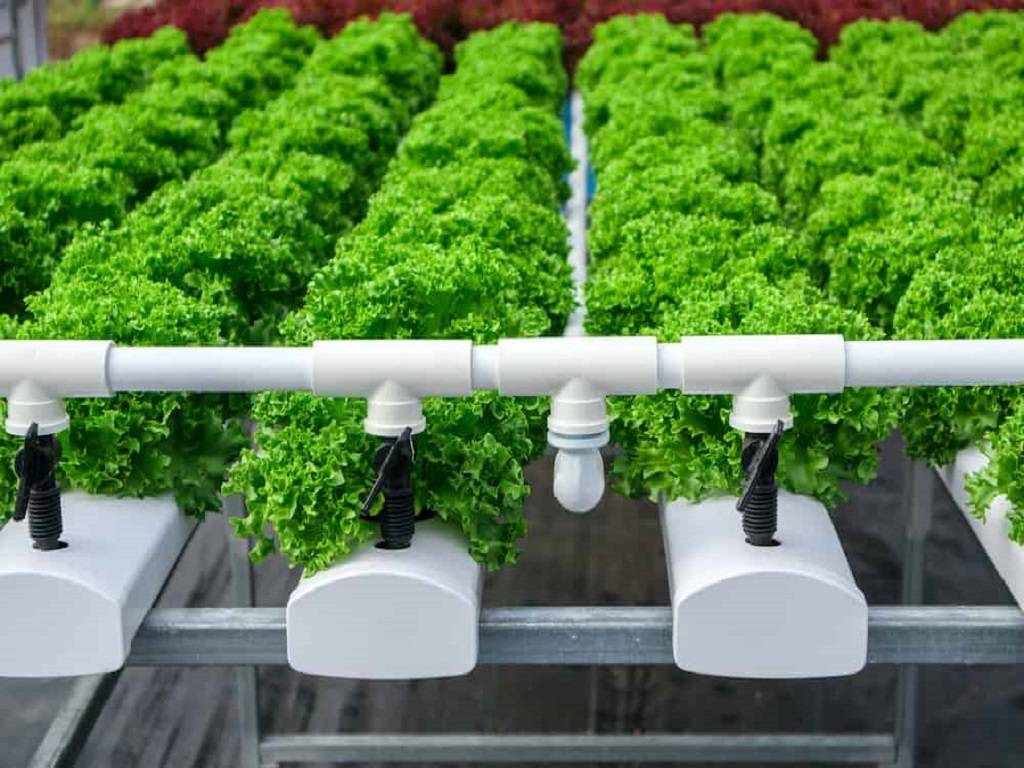
Hydroponics is a method of cultivating plants in which they are engrossed in a nutrient-rich water solution. The roots of plants come into direct contact with the nutrient-rich fluid instead of soil to grow them. Additionally, the plants will have access to a significant amount of oxygen, which will aid in their growth.
The growth rate can be up to 30% quicker than soil-based planting methods if you design the right hydroponic system and use the sensors to keep the water clear of pollutants. You can utilize one of six different types of hydroponic systems, which include the following:
Best Hydroponics System for your crops
Below is the information for all six hydroponic systems with their benefits as well as negative aspects.
Wick System
The wick system is by far the most basic sort of hydroponic system for growing plants, which implies that it may be used by almost anyone. Aerators, pumps, and electricity are not used in the wick system. It is, in fact, the only hydroponic system that does not rely on electricity. The plants are put directly within an absorbent medium like perlite or vermiculite in the preponderance of wick systems. Before being dipped into the growing medium, nylon wicks are placed around the plants.
If you're thinking about utilizing a wick hydroponic system to produce plants, keep in mind that the system's simplicity implies the plants won't be able to get enough nutrients. As a result, the technique is suitable for little plants and herbs in the garden. In this arrangement, any plant that doesn't require a lot of water will thrive.
Another disadvantage of this growing system is that water and nutrients are not equally absorbed, which may result in the accumulation of hazardous mineral salts. Make sure to flush any excess nutrients with new water every 1-2 weeks while using this method.
Water Culture System
Another simple sort of hydroponic system is a water culture system, which inserts the roots of plants directly into the nutrient solution. The wick method uses materials to separate the plants from the water, whereas the water culture system does not. A diffuser or air stone releases the oxygen that the plants require to thrive in the water. Remember to use net pots to secure the plants in their right place while using this system.
The finest feature of the water culture system is that the plant roots are inserted directly into the nutrient supply, allowing the nutrients to be absorbed quickly. Plants produced in the water culture method develop very rapidly because they have direct access to nutrients and oxygen.
Ebb and Flow system
Another common hydroponic system that is mostly utilized by home growers is the ebb and flow system. The plants in this system are placed in a large grow bed filled with growing media such as Rockwool or perlite. Following the careful placement of the plants, the grow bed will be flooded with a nutrient-rich mixture until the water rises a couple of inches below the top layer of the growing media, ensuring that the solution does not overflow.
The water pump that floods the grow bed has a timer built-in, which turns it off after a set length of time. When this happens, the water in the grow bed will be emptied and returned to the pump. Growing practically all sorts of plants, including root crops like carrots and radishes, has been proven to be successful using the ebb and flow system.
Drip System
A drip system is a simple hydroponic system that can be rapidly adjusted for different sorts of plants, making it ideal for any grower who wants to change things up frequently.
The nutrient solution for a drip system is injected into a tube that directs the solution to the plant's root system. A drip emitter is located at the end of each tube and controls how much solution is injected into the plant. You may change the flow to match the demands of each plant separately.
N.F.T system
The N.F.T. system has a simple design, yet it is frequently utilized due to its ability to scale to a wide range of applications. The nutrition solution is deposited into a large reservoir when you utilize one of these systems. The solution is then injected through sloped channels, which enable the surplus nutrients to return to the reservoir. When the nutrient solution is put into the channel, it runs down the slope and over the roots of each plant, ensuring that the proper amount of nutrients are delivered.
Aeroponics System
Aeroponic systems are simple to understand but challenging to construct. The plants you want to cultivate will be suspended in the air using this sort of technology. Below the plants, there are a few mist nozzles.
The nutritional solution will be sprayed onto the roots of each plant using these nozzles, which has shown to be a very successful hydroponic method. The water pump is directly linked to the mist nozzles. The solution is sprayed as the pressure in the pump rises, with any excess flowing into the reservoir below.
















